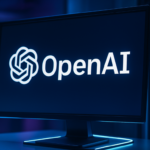Artificial Intelligence (AI) systems today largely depend on periodic human intervention to update their understanding and processing mechanisms. This static nature contributes to their inability to adapt spontaneously to new data. To address this, researchers at the Massachusetts Institute of Technology (MIT) have introduced the Self-Adapting Language Models (SEAL) framework. SEAL allows AI systems to modify their processing parameters autonomously, enabling them to learn continuously and adapt to new information faster than ever before. This development is notable as it could significantly impact various sectors that rely on AI for real-time decision-making and data interpretation.
The challenge with current language models lies in their static weight parameters, which prevent them from internalizing new data without a structured retraining process. Previously, models like GPT-5, Claude 3.5, and Gemini 2.0 excelled in data retrieval and summarization but fell short in integrating those updates into their logic. SEAL’s innovation comes from its ability to allow AI systems to update their internal parameters as they process new information, thus bridging a significant gap in adaptive learning.
Why Fixed Knowledge is Limiting?
The problem with current language models is their reliance on static weight parameters, meaning that while they can fetch and process information, they can’t adjust their reasoning based on new insights. Weight updates, as proposed by SEAL, enable the model to refresh its internal understanding to answer evolving questions, thus improving adaptability.
How does SEAL Function?
SEAL employs a unique training loop enabling AI models to curate their learning tasks. Through self-edits, or written instructions, the model designs learning strategies that help it incorporate new knowledge more effectively. The framework was tested using Meta (NASDAQ:META)’s Llama model, demonstrating that SEAL can significantly enhance the model’s accuracy in adapting to new scenarios.
For example, imagine an AI system used in financial services for loan approval. Existing models could retrieve new policies but weren’t capable of internally adjusting their decision thresholds. SEAL, by updating the AI’s weights, transforms these models from static systems to ones capable of assimilating new guidelines instantly and autonomously. This has profound implications for settings where timely updates are critical.
Could This Transform Financial Institutions’ AI Systems?
The financial sector is an area where real-time data adaptation is crucial. As SEAL enables self-directed learning, financial institutions could potentially optimize their AI-driven processes, such as credit risk assessment and market analysis, more efficiently. This could reduce the response time between a new regulatory standard being published and its application in decision-making frameworks.
Coincidentally, the financial regulators are increasingly focused on how AI impacts financial systems’ risk models. In light of recent warnings from bodies like the Financial Stability Board and Bank for International Settlements about potentially risky AI strategies, SEAL’s framework presents an opportunity to develop AI applications that are both transparent and accountable.
“We should be able to expose how we’re using [AI], what’s the data that’s being ingested,” emphasized Melissa Douros, Chief Product Officer at Green Dot. Such concerns echo the pressing need to ensure AI systems remain comprehensible and explainable, especially as they become more autonomous.
“It can be very difficult to gain a customer’s trust,” noted Douros, pointing to the imperative of maintaining transparency in AI processes.
Existing language model limitations have spurred research into more adaptive AI systems, as seen in MIT’s SEAL development. Such advancement could mark the beginning of AI systems capable of autonomous learning without external retraining. The implications for financial institutions are significant and could revamp how these organizations implement AI-driven strategies. While mitigations around AI’s opacity and bias need attention, the benefits of adaptable AI technologies are increasingly evident, especially where swift adaptation to evolving data is critical.










